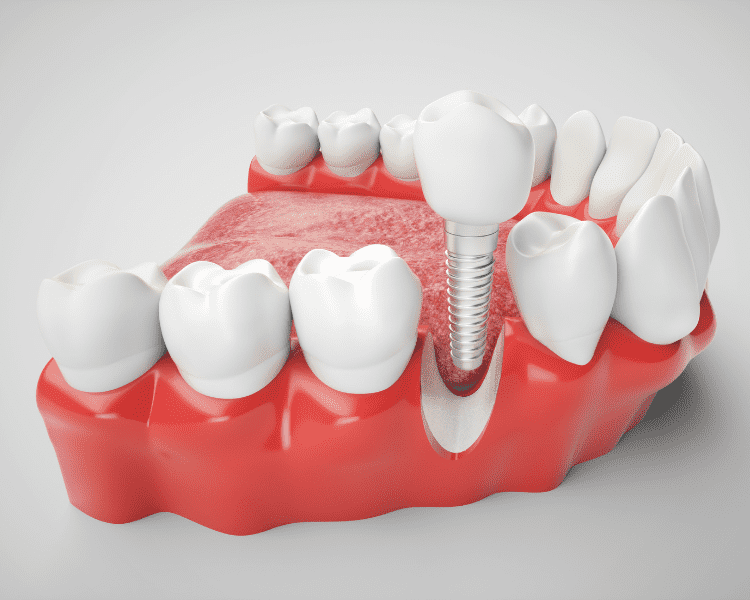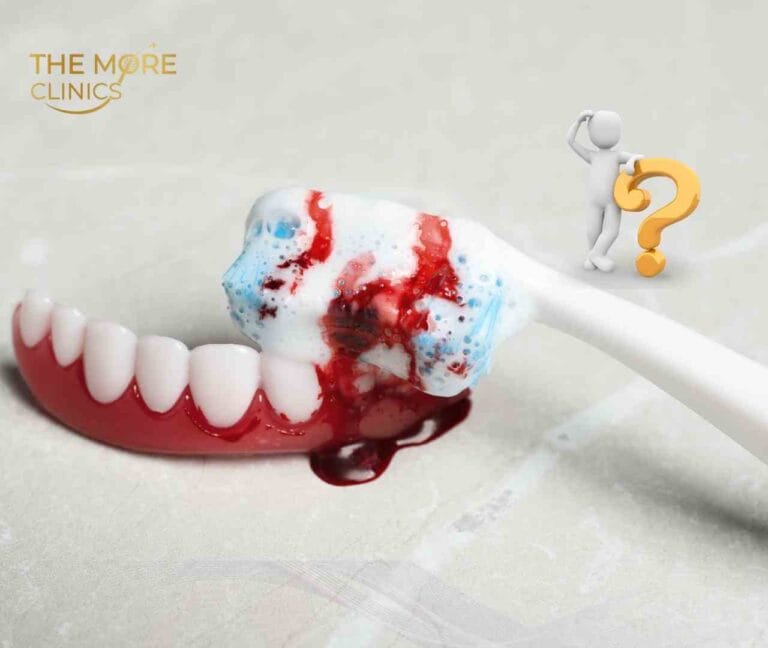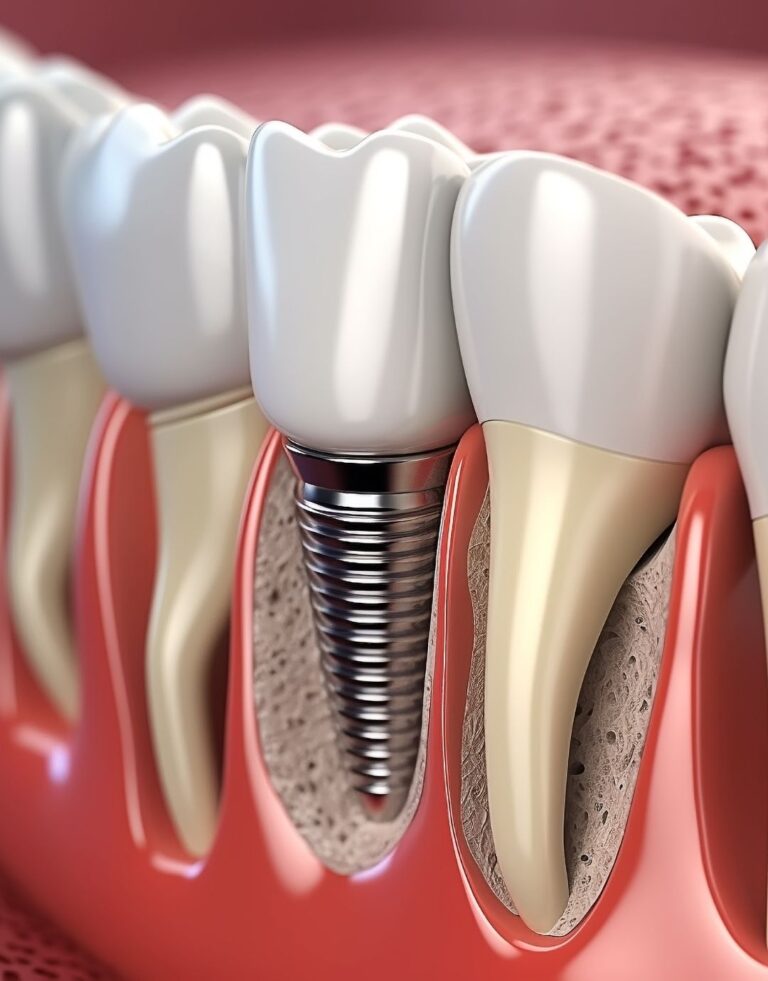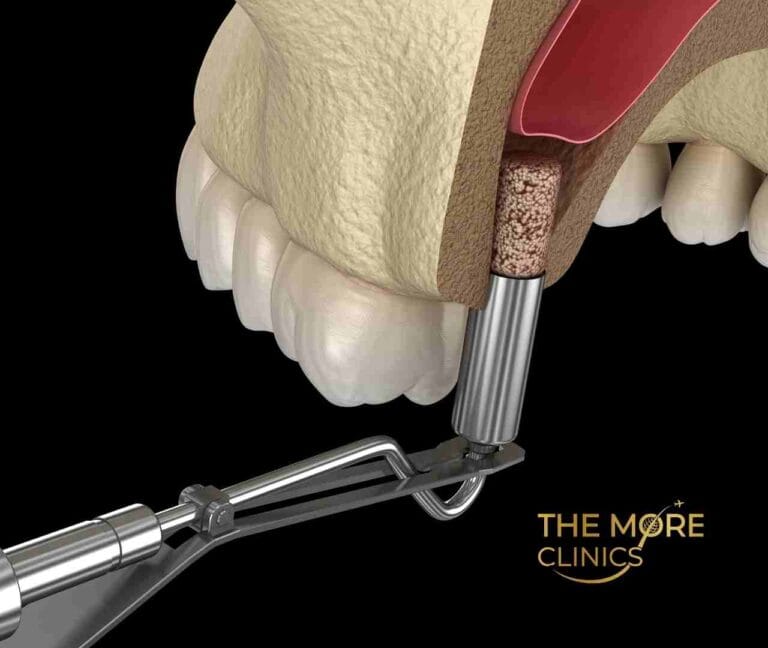Dental Bone Graft: All You Need to Know
A dental bone graft becomes necessary when there is bone loss in the jaw. This procedure is typically performed before dental implant placement or when bone loss adversely affects adjacent teeth.
What is a Dental Bone Graft?
A bone graft is a surgical procedure that uses transplanted bone to repair and rebuild damaged bones. There are several types of bone grafts: autografts (from your own body), allografts (from a donor), xenografts (from animals), and synthetic grafts.
Who Needs a Bone Graft?
People suffering from missing teeth due to accidents, decay, or any other oral health issues might require a bone graft, especially if they plan to get dental implants, as these implants demand sufficient bone density and structure to ensure their correct placement and long-term stability.

Typically, when an individual experiences bone loss in their jaw, it often necessitates a dental bone graft procedure.This intervention involves the transplantation of bone material to restore and strengthen the jawbone, promoting stability and supporting dental implants or other dental treatments.
How Does It Work?
The bone grafting procedure involves placing donor bone (from a tissue bank) or synthetic bone materials into the area of bone loss, stimulating new bone growth and providing structural stability. Severe bone loss may require Zygomatic Implant Treatment.
Types of Bone Grafts
There are several types of bone grafts: autografts (from your own body), allografts (from a donor), xenografts (from animals), and synthetic grafts. Each type has its own advantages and considerations.
Types of Bone Grefting Surgery
- Ridge Augmentation: This is a common dental procedure often performed following a tooth extraction to help recreate the natural contour of the gums and jaw that may have been lost due to bone loss as a result of extraction. The alveolar ridge of the jaw is the bone that surrounds the roots of teeth. When a tooth is removed, it leaves behind an empty socket. Over time, this socket can deteriorate, leading to a collapse of the socket and a loss of bone in the jaw.
- Sinus Lift: A sinus lift, also known as a sinus augmentation, is a surgical procedure that adds bone to your upper jaw in the area of your molars and premolars to make it taller. This is done when the sinus wall is very thin and is unable to support the placement of dental implants. The procedure involves lifting the sinus membrane and grafting bone into the sinus, which increases the amount of bone in the area.
- Socket Graft: A socket graft is a bone graft procedure that prevents the atrophy of bone and gum tissue following tooth extraction. The grafting material is placed directly into the socket where the tooth has been extracted to prevent the socket from collapsing and to promote healing of the bone. This procedure is typically done immediately after extraction to prepare the area for a future dental implant.
- Simultaneous Bone Grafting: This is a procedure that is performed at the same time as dental implant placement. During this procedure, a small amount of grafting material is placed into the socket along with the implant. The purpose of this is to fill any gaps between the implant and the socket walls. The grafting material helps to promote bone growth and provide stability for the implant.
Benefits of Dental Bone Graft
- Restoration of Bone Structure: Bone grafts play a crucial role in restoring the bone structure that has been lost due to injury, disease, or tooth extraction.
- Support for Dental Implants: Bone grafts provide necessary support and stability for dental implants, therefore improving the overall success rate of this dental procedure.
- Prevention of Bone Loss: Implementing a bone graft right after tooth extraction can prevent further bone loss and preserve the jawbone’s health and functionality.
- Improved Dental Function and Aesthetics: By restoring bone structure, bone grafts can enhance dental function and aesthetics, boosting patients’ self-confidence and quality of life.
Risks of Dental Bone Graft
- Infection: As with any surgical procedure, there is a risk of infection post-surgery. It’s crucial to follow the dentist’s post-surgery care instructions to minimize this risk.
- Rejection of Graft: There’s a chance the patient’s body might reject the graft, especially in allografts and xenografts. This can lead to complications and necessitate further surgical interventions.
- Pain and Swelling: Pain, swelling, and discomfort are common post-surgery side effects. They usually resolve with time and appropriate care.
- Nerve Damage: While rare, nerve damage is a potential risk during bone graft surgery. This can lead to numbness or tingling in the surrounding area.
Dental Bone Graft Cost
The dental bone graft cost can vary depending on several factors. – Location of the dental clinic: Costs may vary depending on the clinic’s location.
- Complexity of the procedure: Additional procedures or more complex cases may impact the cost.
- Bone graft materials: The type of material used (e.g., synthetic, bovine, or autograft) influences the price.
- Expertise of Bone Graft Specialist: The experience and qualifications of the dental professional performing the graft are key factors.
Dental Bone Graft Specialist in Turkey with Affordable Cost
| Country | Average Cost (USD) | Details |
|---|
| UK | $1200 – $2,000 | Cost varies based on material used (synthetic, cadaver, or autograft) and clinic. |
| Germany | $1000 – $2,000 | High-quality healthcare with advanced technology; prices include consultations. |
| USA | $1,000 – $3,000 | Among the highest costs globally due to advanced facilities and insurance factors. |
| Dental Bone Graft Cost Turkey | $300 – $800 | Affordable due to lower operational costs; popular |
Last Words from The More Clinics –
Bone grafts play a pivotal role in dental care, particularly in scenarios involving bone loss in the jaw. Though beneficial in restoring bone structure, supporting dental implants, preventing more bone loss, and improving dental function and aesthetics. Adopting recommended post-surgery care steps can ensure a smooth recovery.
At The More Clinics, we offer expert dental services for international patients, providing you with the support and guidance needed throughout your dental implant journey. Embrace your new smile with confidence and take the necessary steps to maintain the beauty and functionality of your dental implant.
GET A FREE CONSULTATION!
Let’s Start Planning Your Treatment %100 Guarantee Results.
Frequently Asked Questions (FAQs) about Tooth Bone Graft
The bone grafting procedure typically takes about 45 minutes to an hour. However, the time may vary based on the complexity of the case and the type of graft being used.
During the procedure, you are under local anesthesia, so you won’t feel pain. Post-surgery, there might be some discomfort which is usually managed with prescribed painkillers.
Recovery time varies for each patient and the type of graft used. Generally, it may take anywhere from a few weeks to a few months for the bone graft to fuse with the natural bones in your jaw.
Ignoring the need for a bone graft could lead to further bone loss, making it more difficult to place dental implants in the future. It might also affect the shape and appearance of your mouth and face.
POURQUOI LES GENS NOUS CHOISISSENT-ILS ?
“Pour obtenir de bons résultats cliniques, il faut combiner l’expertise médicale, les technologies de pointe et des soins de haute qualité.
Les cliniques More, qui offrent aux patients du monde entier des services dentaires de premier ordre dans plus de 90 pays, en 7 langues, en coordination avec les équipes de soutien et les bureaux des États-Unis, du Royaume-Uni, du Canada et d’Israël.
- Plus de 10 000 patients à travers le monde !
- Technologies de pointe et matériaux de haute qualité.
- Des marques de confiance à l’échelle mondiale !
- Laboratoire sur site
- Plus de 20 ans d’expérience.
- Équipe de dentistes qualifiés et accrédités en Turquie.
- Orienté vers les droits des patients !
- Des prix raisonnables et abordables
- Assistance sur site et hors site 24 heures sur 24, 7 jours sur 7.






